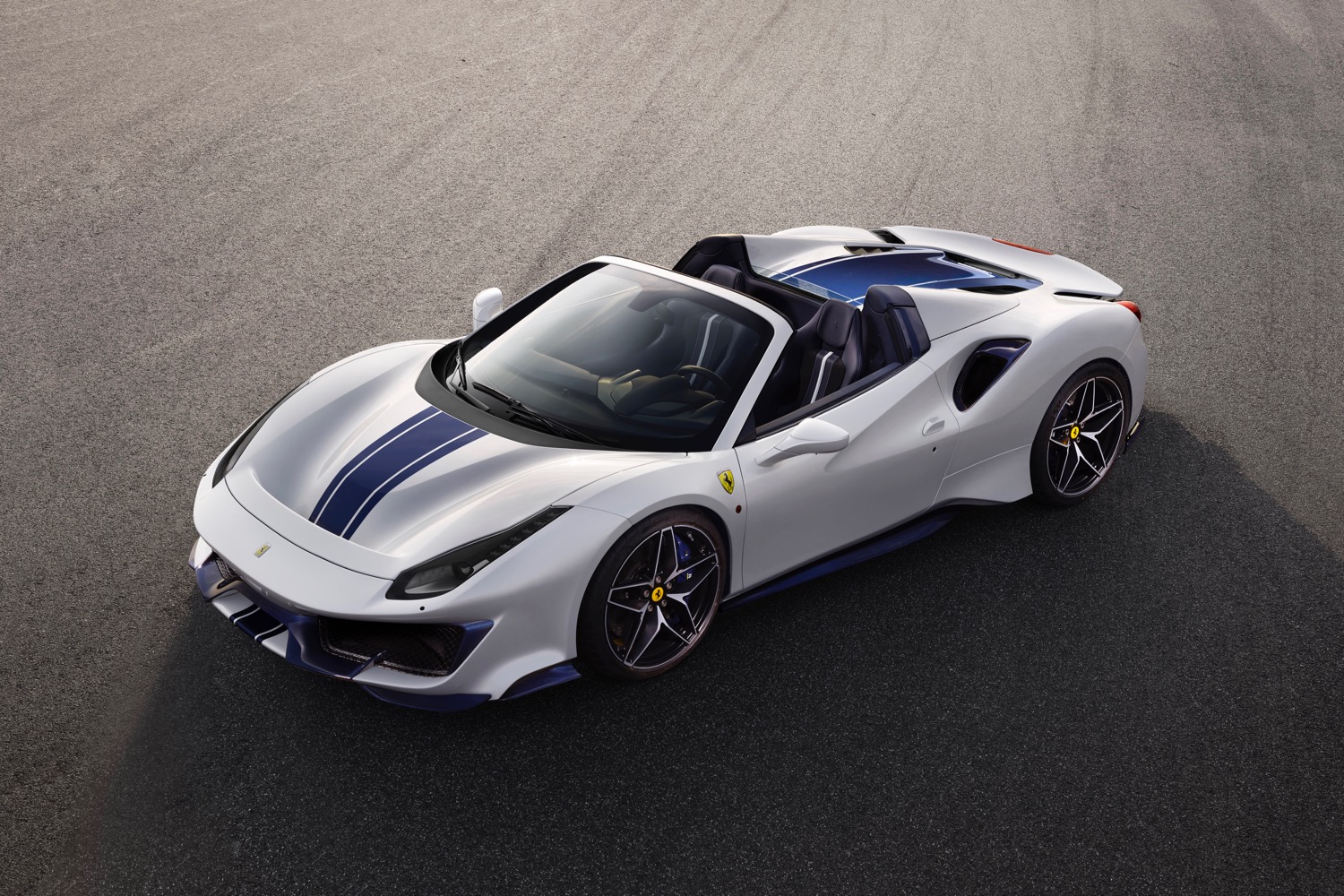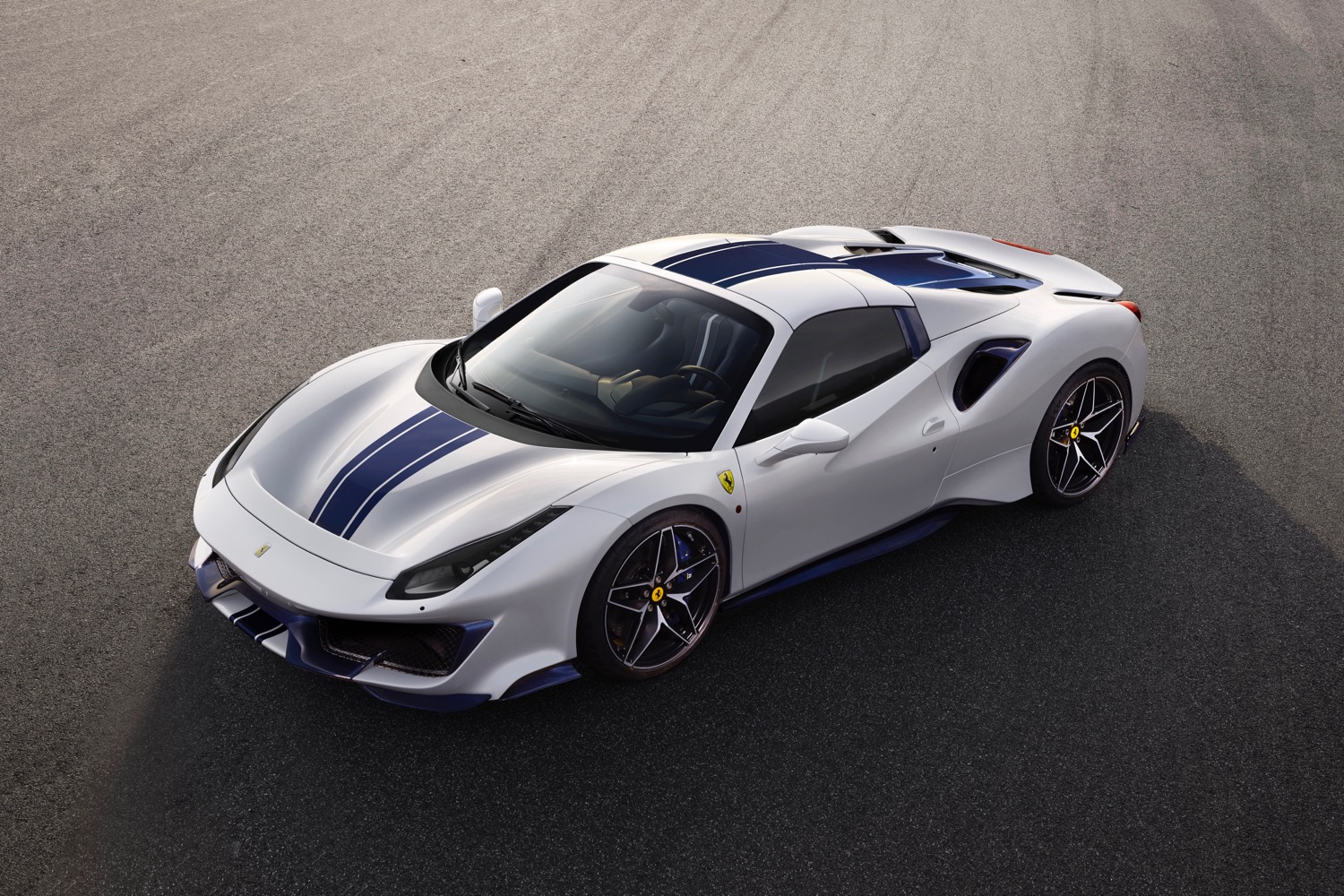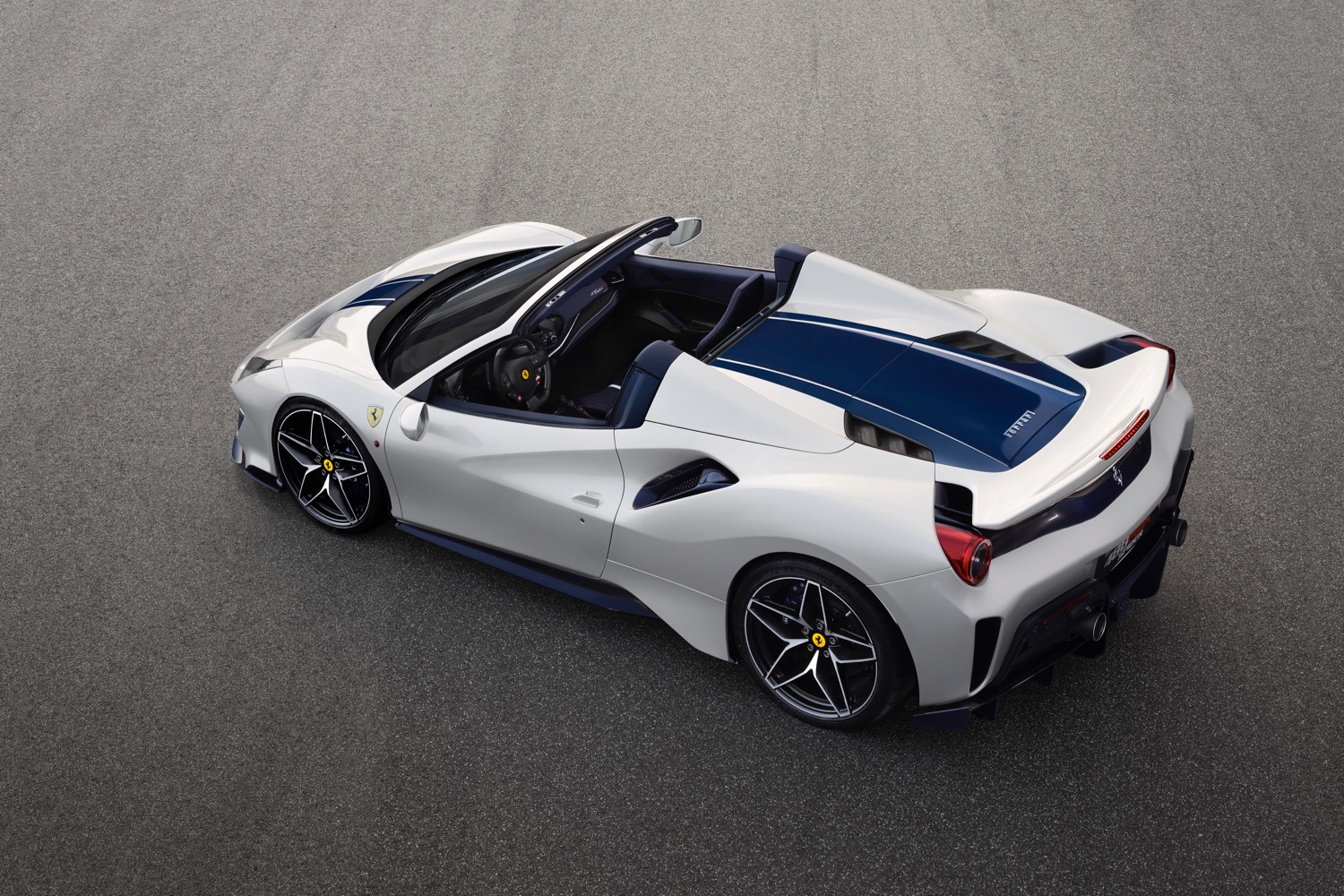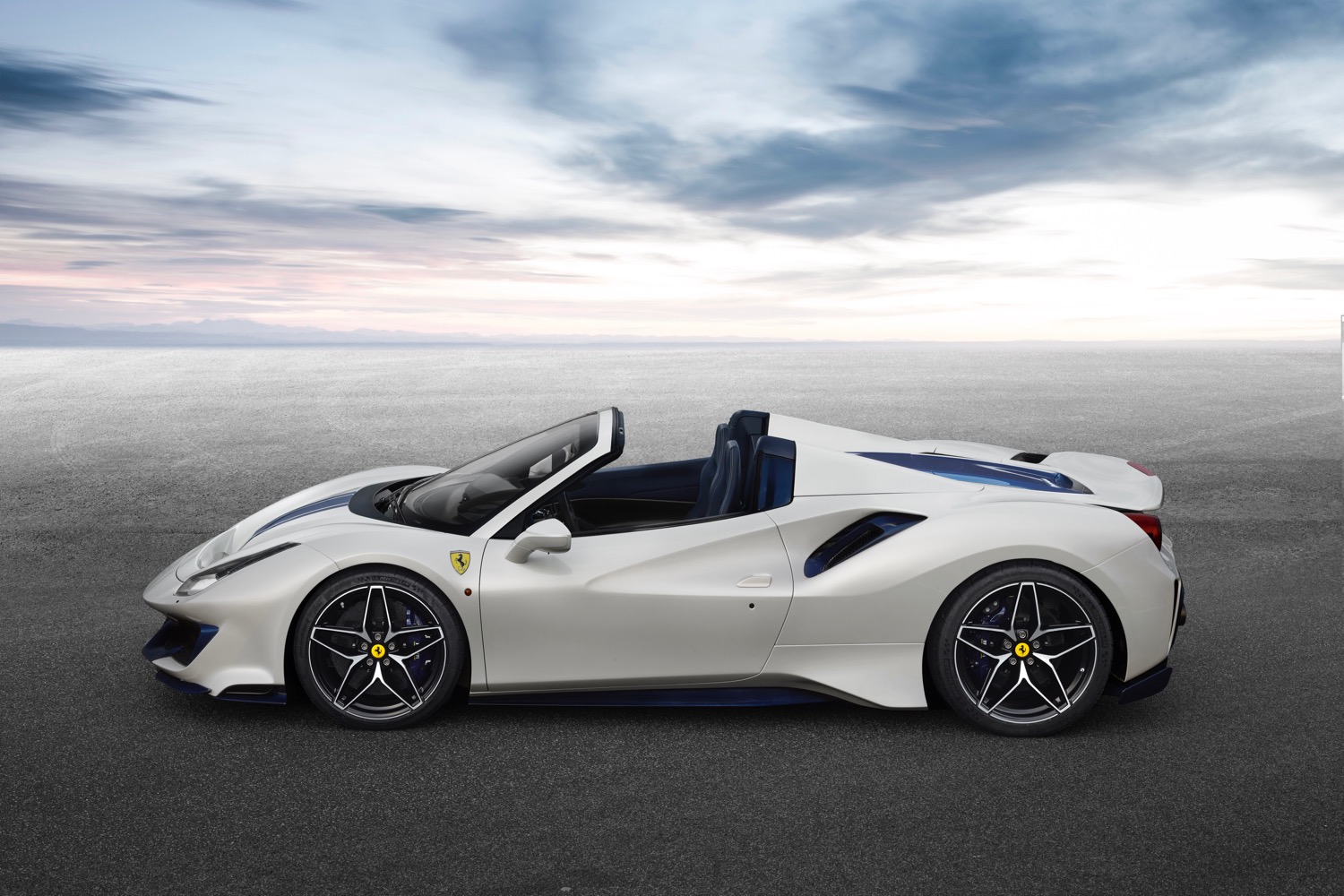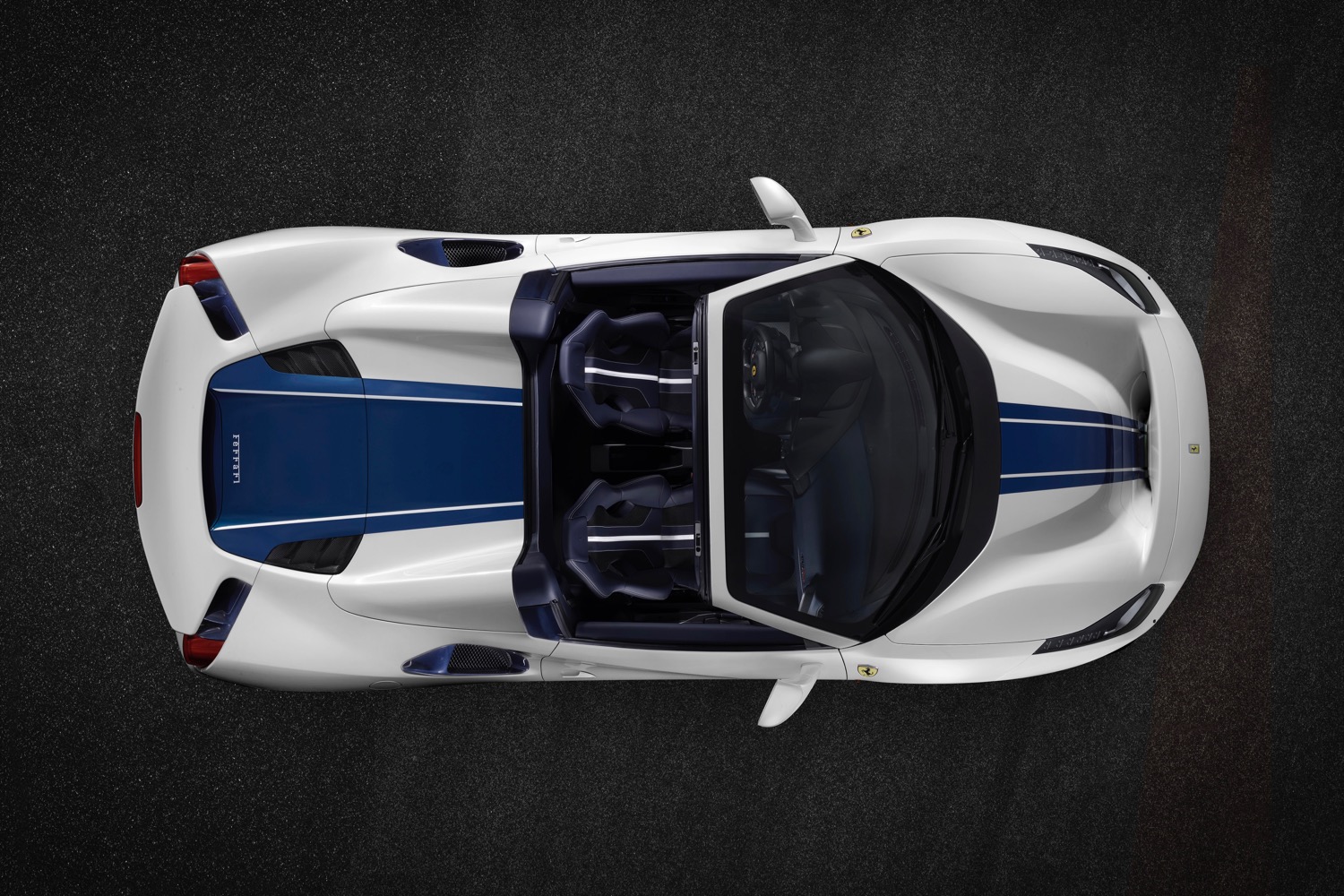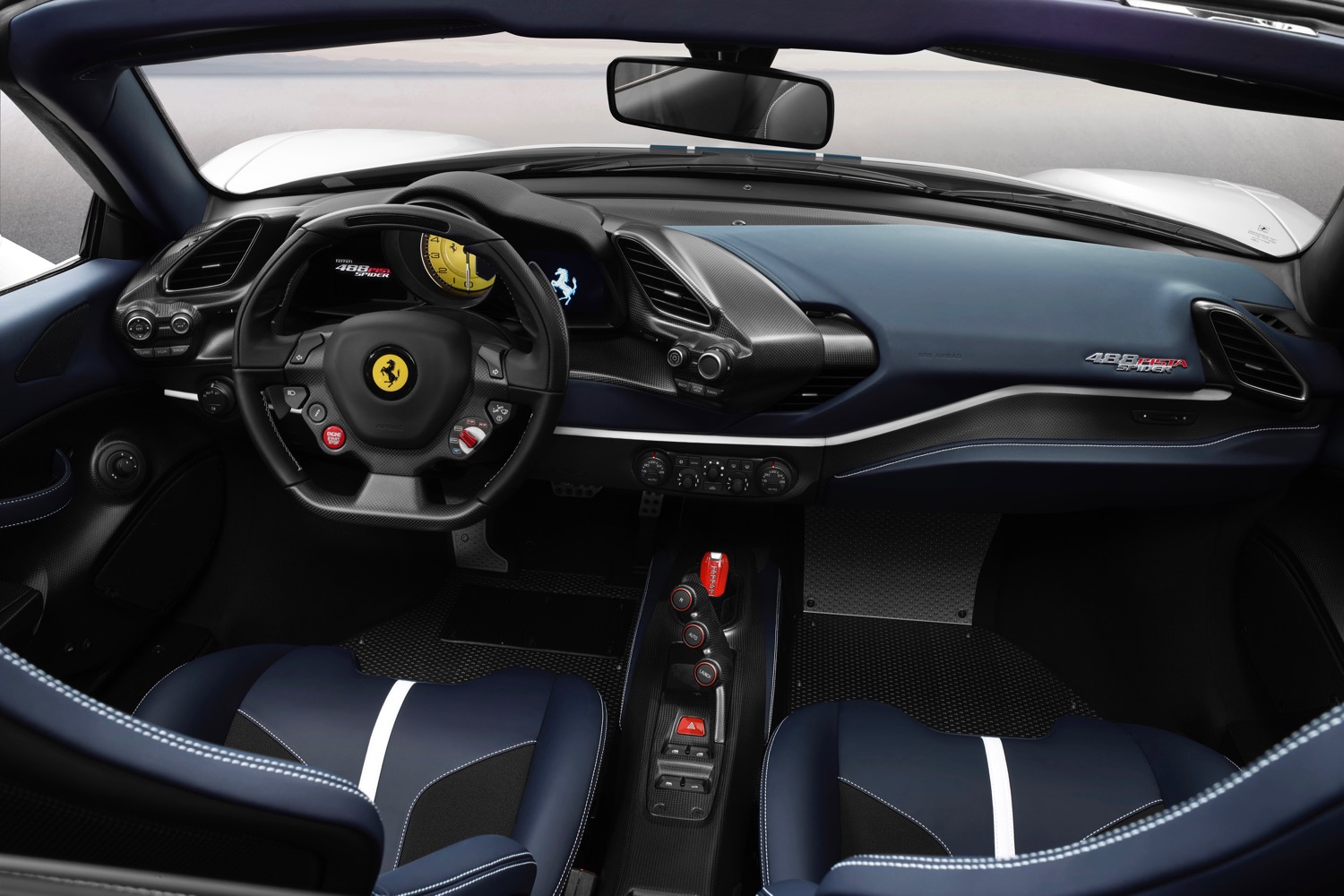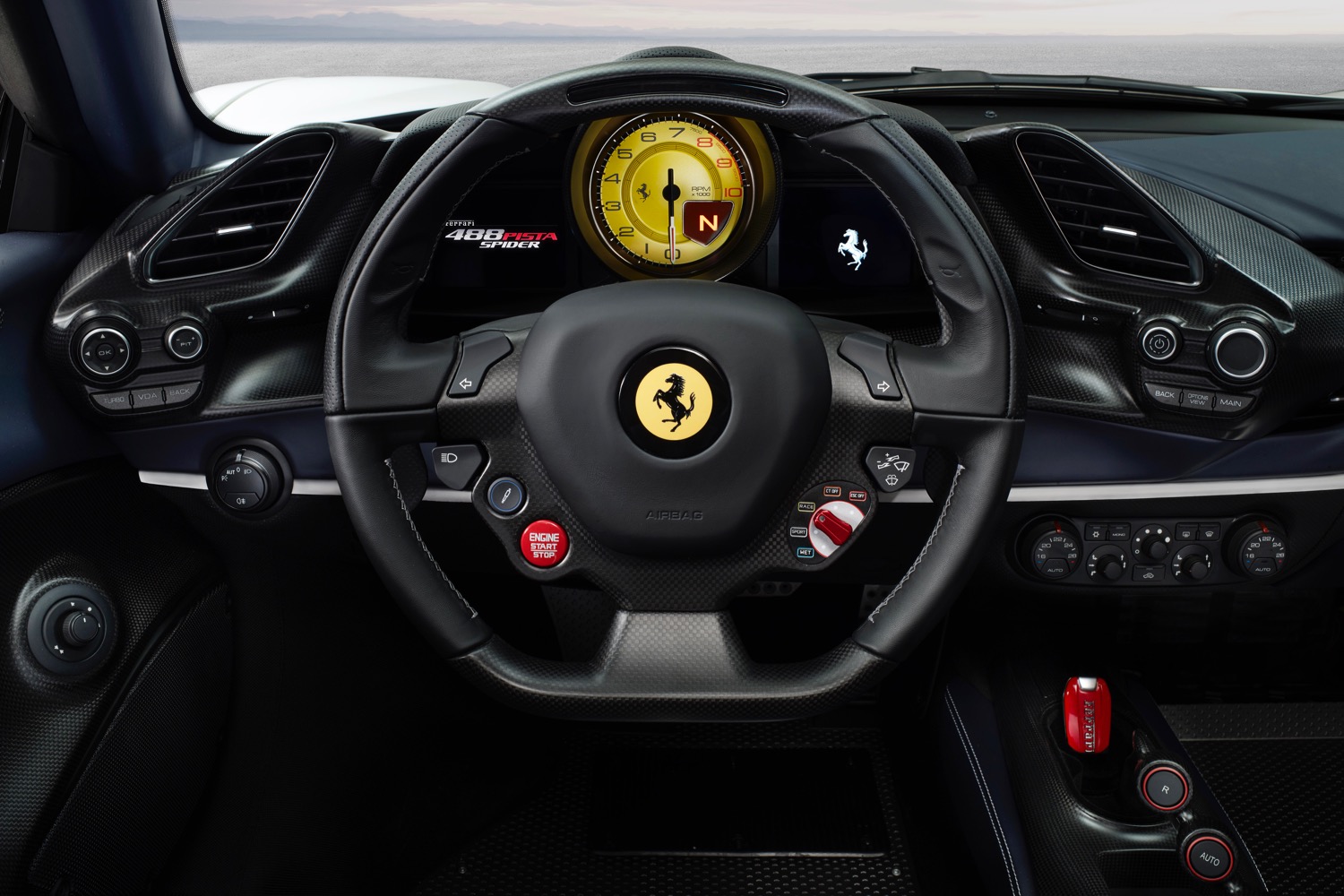The Ferrari 488 Pista is a hardcore version of the 488 GTB designed for track use, making it a natural rival to the Lamborghini Huracán Performante. So, now that Lambo has a convertible Huracán Performante Spyder, it’s not surprising that Ferrari is launching a 488 Pista Spider drop-top.
Unveiled at the 2018 Pebble Beach Concours d’Elegance, the most prestigious of the many events that make up Monterey Car Week, the Spider gets the same performance upgrades as the 488 Pista coupe, but with the option of open-air driving thanks to a retractable hard top. Ferrari says the 488 Pista Spider is the 50th convertible model it’s launched in 70 years of making cars.
Like the 488 Pista coupe, the Spider uses a 3.9-liter twin-turbocharged V8 that produces 710 horsepower and 568 pound-feet of torque. That’s an increase of 50 hp and 8 lb.-ft. over the 488 Spider, the model on which the 488 Pista Spider is based. A seven-speed dual-clutch transmission sends that power to the rear wheels.
“Pista” is Italian for “track,” and the Pista Spider’s abilities live up to that name. Ferrari claims the convertible supercar will do 0 to 62 mph in 2.85 seconds, and reach a top speed of 211 mph. Those figures match the Pista coupe, which is impressive given the convertible’s higher weight.
Ferrari was fanatical about weight reduction on the Pista Spider, replacing the carpets with aluminum plates, and the driver’s door handle with a strap. An optional set of carbon fiber wheels are 20 percent lighter than the standard forged alloy rims, according to Ferrari. But even with the carbon fiber wheels, the Spider weighs about 220 pounds more than the Pista coupe.
The Pista Spider also gets the same electronics suite as the Pista coupe. Standing between the driver and a very expensive crash are Ferrari’s F1-Trac traction-control system, electronic differential, and Ferrari Dynamic Enhancer, which uses software to adjust the pressure the brake calipers apply to the rotors to help keep the car under control during at-limit driving.
Ferrari won’t discuss pricing or a launch date for the 488 Pista Spider. The automaker did note that the car was unveiled in Pebble Beach due to the popularity of convertibles in North America, so U.S. supercar spotters should keep their eyes peeled for Ferrari’s latest high-performance drop-top.
